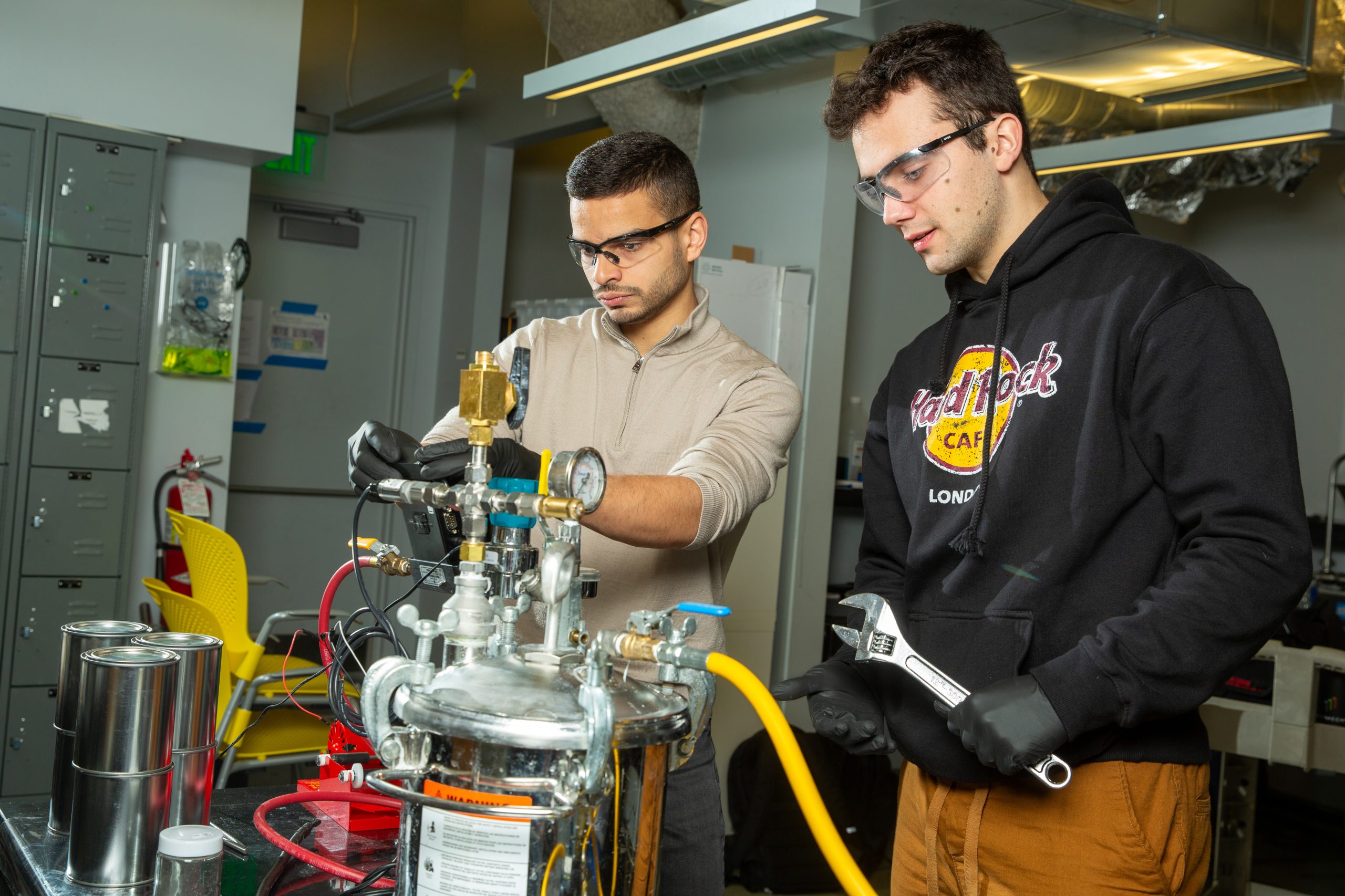In 2006, after a less than illustrious career in the restaurant business, 31-year-old Ben Zempel got a job with wholesaler Costco. That wouldn’t be remarkable in itself, but Zempel has Down syndrome. Since he got the job, he’s happier than ever, according to his mom, Jane. “To say Ben loves his job is a gross understatement,” she says. “His coworkers are an extended family, and the members are a large community of friends.”
When the family moved to Raleigh, North Carolina, from Minneapolis in 2010, Costco transferred Zempel. And when cofounder and general director Jim Sinegal visited the Raleigh store recently, he still recognized Zempel from his old branch. “Ben was thrilled,” says his mother, recalling his reaction: “‘Mr. Sinegal shook hands with me and remembered me from the Minneapolis store! How cool is that—the CEO remembers me!’”
It’s not just employees with a disability, because all 163,000 people on Costco’s payroll around the world can count on extraordinary amounts of attention. They’re better paid than competitors’ staff, management solicits their input on store strategy, and full and part-time workers alike enjoy complete health insurance coverage. It all adds up to low turnover: Just 6 percent of employees decide to leave the company after more than a year. In fact, after 20 Costco staff from Melville, New York, won a $200 million lottery prize last year, only one of them quit—not because of the unexpected fortune but because at 73, he figured it was time to retire.
More and more businesses are beginning to realize, as Costco has, that it pays to invest in people. After all, happy employees do better work. That makes for satisfied customers, and satisfied customers please shareholders. So it seems only logical that every company should make it a priority to pay attention to staff. During a time of cutbacks and layoffs, though, businesses have other things to think about besides workers’ happiness. Strikingly, it’s companies that put staff at the top of the list that seem to be doing best. Costco ended 2010 and 2011—tough years for most companies—with hefty profits.
So how do they do it? Google, for one, offers a range of perks—free meals, massages, dry cleaning—and in exchange, it attracts more motivated, efficient and creative employees. That, in turn, means lower staff turnover, more productivity and, ultimately, higher profits. Other companies offer individual coaching and training. One is Southwest Airlines, which, alone among U.S. carriers, has booked profit every year of its 30 years in business.
The trend of paying more attention to employees seems to stem from a number of social developments. Globalization, the rise of the mobile Internet, the increasing need for transparency and an unsettled economy call for different labor relations. Employees want personal attention, training and development opportunities, and a more favorable work-life balance. In addition, people are much more flexible nowadays about where and when they work. “People no longer choose their job based on the place they live,” says Ian Williamson, a professor of human resource management at Australia’s Melbourne Business School. “Companies are even competing on an international level. That’s why they have to make a bigger effort to attract and keep future employees.”
Williamson, who’s been doing research on leadership and business strategy for years, attributes the change in labor relations to the shift from a product-oriented economy to a service-oriented one. “Employees are no longer a means in the process of production,” he says. Instead, “they’re valued for their knowledge and expertise. This is specifically true for IT [and] the finance and consultancy industry. But other industries are also acknowledging that employees have become the product of the company.”
Tinka van Vuuren, an organizational psychologist and professor of vitality management at the Open University in Utrecht, the Netherlands, also observes that people are seeking more independence and personal attention at work. “It’s easier with people who’ve been to college,” she says, “because they tend to want more independence and to be able to handle it. But letting people set their own schedules also works well in industries like home health care.”
For example, the Dutch nursing home care organization Buurtzorg Nederland has developed an innovative model in which highly educated visiting nurses and caregivers work in small, autonomous “neighborhood care teams.” Staff manages everything from scheduling to division of labor. The result is a greater feeling of responsibility among employees, more consistency—clients see the same caregivers as often as possible—and increased efficiency. All that makes customers happy, too. The Dutch research organization for employee satisfaction ranked Buurtzorg the Netherlands’ best employer in 2011.
Eric van Riet, director of the Dutch arm of the Great Place to Work institute, agrees that employees are gaining power. Each year, the 40-country consulting and research firm publishes a list of Best Places to Work after surveying employees on matters like development opportunities, personal attention and contact with coworkers. It also advises directors and managers on how to make their companies desirable places to work. Clients include Microsoft, PepsiCo and Spanish telecom provider Telefónica.
Van Riet says more and more businesses are coming to him for advice: “The new generation of employees has very different requirements than previous ones did. To them, pensions and permanent contracts are old hat. They’re asking employers totally different questions. What are the development opportunities? How can I design my own working environment?”
A key first step in becoming a great place to work, Van Riet says, is letting go of outdated habits. Mainly, this means transitioning from a control-based culture to one of trust. “Old hierarchical management styles need to go,” Van Riet says. “It’s not about employees’ physical presence; it’s about availability and reachability.”
Thus, employees at Microsoft—chosen as the world’s Best Place to Work in 2011—get flexibility in deciding what hours they work, and their bosses judge them on output, not time spent at the office. At FedEx—No. 5 on the list—workers help set their schedules, fitting them around their personal lives. And Tom Mendoza, vice-president of Internet company Netapp (No. 3), reportedly calls 30 staff members every week to personally thank them for their efforts.

For many companies, though, becoming a great workplace is easier said than done. Businesses know happy employees are important, but managers don’t always know how to make them happy. “Most CEOs have a background in finance or IT,” Melbourne Business School’s Williamson explains. “They lack the so-called soft skills to motivate and truly guide their employees.” It wouldn’t hurt, he says, if more people with a background in human resources or communication made it to the top. Williamson cites Vineet Nayar, director of IT-services company HTL Technologies, as a good example. The former HR specialist, not coincidentally, has written a book called Employees First, Customers Second.
Successful companies have one thing in common where workers are concerned: They make every member of the organization feel important. From intern to CEO, everyone gets the same amount of appreciation and attention. And that creates trust. “The loyalty of employees, for the most part, depends on how they’re treated when times are down,” Williamson says. “If they feel appreciated and important, they will make a bigger effort to help the company get back up.”
The dumbest thing companies can do during the crisis, he warns, is let people go: “Firing staff is not only bad for the morale of the ones left behind, it’s also a shortsighted strategy. Because what happens when the company is doing better? It starts hiring new people, but those employees lack the knowledge and loyalty. It takes a lot of time and investments to build that back up.”
Van Vuuren agrees that companies are better off following a long-term vision. “Because of the economic crisis, there’s more danger of layoffs, and people are afraid of losing their jobs. So, for example, they’re taking fewer sick days. But that doesn’t mean companies should stop investing in people. With the population set to age significantly, it’s important for employers to be, and stay, attractive.”
Van Vuuren points out that worker happiness differs from worker satisfaction in a subtle but key way. Studies of satisfaction are outdated, she says, because it’s a passive concept. “You might be satisfied, but that doesn’t mean you’re enthusiastic, really motivated. And that’s what happiness is.” To achieve it, she says, employees need to take responsibility too. “You have to remain critical. Ask yourself, Can I continue to grow working here? If so, do I need further training? Or would it be better if I got a job someplace else? Ultimately, more autonomy is good for people—it creates energy.”
Amazon is paying its employees $12,000 to train for a job at another company
The key to retaining employees is to involve them in social causes
4 ways to help employees find meaning at work
Just capital: Measuring which companies are best for the world

The Employee Always Knows Best
More of Today's Solutions
MIT engineers convert soda cans and seawater into zero-emission fuel
BY THE OPTIMIST DAILY EDITORIAL TEAM In a breakthrough for sustainable energy, MIT engineers developed a way to produce hydrogen fuel from ordinary elements ...
Read MoreResearch reveals that ADHD may have given us an evolutionary edge
In an unexpected twist, features formerly associated with Attention Deficit Hyperactivity Disorder (ADHD) are now being studied via an evolutionary lens. A new study ...
Read MoreThe science behind the top 2 personality traits people look for in romantic p...
In a world dominated by superficial characteristics, a recent study published in the Archives of Sexual Behavior offers a novel viewpoint on love preferences. ...
Read MoreMicrowave magic redefines lithium recovery in batteries
BY THE OPTIMIST DAILY EDITORIAL TEAM As the need for rechargeable technology—from smartphones to electric vehicles—increases, so does the demand for lithium. This rare ...
Read More










